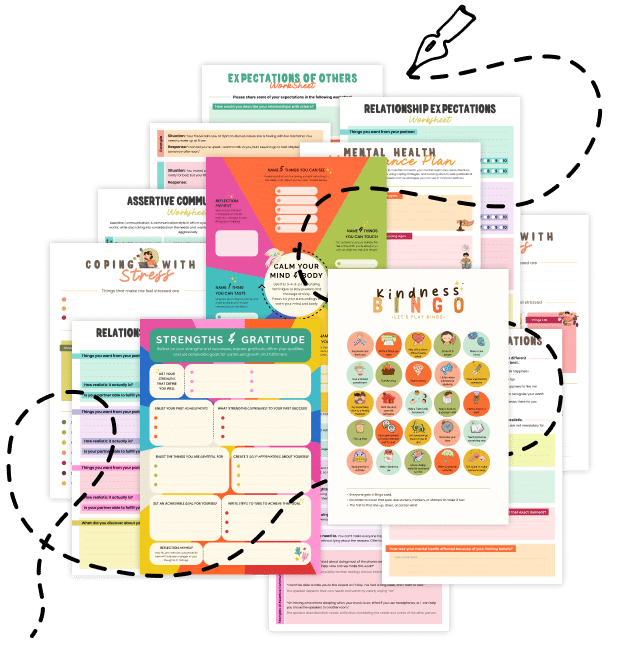20 Things You Should Know About Perceptual Adaptation
Learn how your brain adjusts to new sensory information through Perceptual Adaptation. Explore 20 key insights on what it is, how it works, and ways to harness its power for improved perception and learning.
1. What Is Perceptual Adaptation?
Perceptual Adaptation is the brain’s ability to adjust to changes in sensory input. It allows you to recalibrate your perception when faced with new or altered environments.
2. The Brain’s Flexible Response
Your sensory systems are not fixed; they continuously tune themselves based on experience, enabling you to remain effective in varying conditions.
3. Examples in Daily Life
Think of how your eyes adjust when you move from a dark room into bright sunlight, or how you get used to the noise of a busy street over time. These are classic examples of perceptual adaptation.
4. Enhancing Visual Clarity
When your environment changes, your brain quickly recalibrates visual input—adjusting contrast, color, and brightness—to help you see clearly.
5. Auditory Adaptation
After being exposed to loud sounds, your ears may temporarily become less sensitive, which is another form of perceptual adaptation designed to protect your hearing.
6. Tactile Adjustments
Over time, if you wear a watch or ring continuously, you eventually stop noticing its pressure or weight. Your sense of touch adapts to constant stimuli.
7. Role in Learning
Perceptual adaptation helps you learn by filtering out irrelevant details and focusing on the novel aspects of an experience—making it easier to absorb new information.
8. Coping With Change
Adaptation is key to thriving in changing environments. It explains why you eventually become accustomed to a new home, a new job setting, or even a different accent.
9. The Time Factor
Adaptation isn’t instantaneous—it often takes a few minutes or even hours for your sensory systems to fully adjust to new conditions.
10. Avoiding Sensory Overload
By adapting, your brain prevents sensory overload. It reduces the intensity of persistent stimuli so you aren’t overwhelmed by constant input.
11. Perceptual Set Shifts
Your brain not only adapts but also shifts its perceptual set—the way you interpret sensory information—based on context and expectations.
12. Misconception: Permanent Change
A common misunderstanding is that adaptation permanently alters your senses. In reality, once you return to the original environment, your perception gradually readjusts to baseline levels.
13. Neural Mechanisms
Perceptual adaptation involves changes in neural firing rates and synaptic plasticity. Neurons in sensory areas recalibrate to better represent the new input conditions.
14. Impact on Performance
Athletes, pilots, and drivers benefit from rapid perceptual adaptation. Their ability to quickly adjust to changing visual or auditory cues can significantly improve performance and safety.
15. Cultural and Contextual Influence
Cultural experiences can shape the way you adapt. For instance, exposure to different art styles or music genres can influence your sensory expectations and adaptation patterns.
16. Technology and Adaptation
Modern devices (like virtual reality headsets) rely on perceptual adaptation. Your brain learns to interpret simulated environments as if they were real, enhancing immersion.
17. Training and Improvement
Perceptual training—like practicing with altered visual stimuli or noise-cancelling techniques—can enhance your adaptability, improving your overall sensory processing.
18. Emotional and Cognitive Effects
Adaptation isn’t limited to sensory input. It can extend to emotional responses, helping you get used to stressful situations and regulate your reactions over time.
19. Applications in Therapy
Therapists use perceptual adaptation principles to help patients overcome phobias or anxiety. Gradual exposure to feared stimuli can help the brain adapt and reduce the emotional response.
20. Related Topics to Explore
- Cognitive Load Theory: How the brain manages incoming information.
- Interoceptive Awareness: Tuning into internal bodily signals.
- Mind-Wandering Mode: The role of rest in mental processing.
- Attentional Set Shifting: How the brain switches focus between different stimuli.
Quick Tips to Enhance Perceptual Adaptation
- Embrace New Experiences: Regularly expose yourself to different environments to keep your senses agile.
- Practice Mindfulness: Stay aware of how your perceptions change in different settings.
- Limit Constant Stimuli: Give your senses a break from repetitive inputs to maintain sensitivity.
- Use Training Exercises: Engage in tasks that challenge your sensory processing—like visual puzzles or sound discrimination games.
- Reflect on Changes: Notice and note how your perception shifts when moving between environments—it reinforces the adaptation process.
Perceptual Adaptation is a testament to the brain’s incredible flexibility. By understanding how your senses recalibrate to new stimuli, you can better appreciate your environment and even harness these changes to improve learning, performance, and emotional balance. Whether you’re adjusting to a new city or simply stepping out into the bright sunlight after a cloudy day, your brain is hard at work, ensuring that you see, hear, and feel the world in the best possible way.
Share this article with anyone curious about how our brains adapt to an ever-changing world. A deeper understanding of perceptual adaptation might just change the way they experience life!

